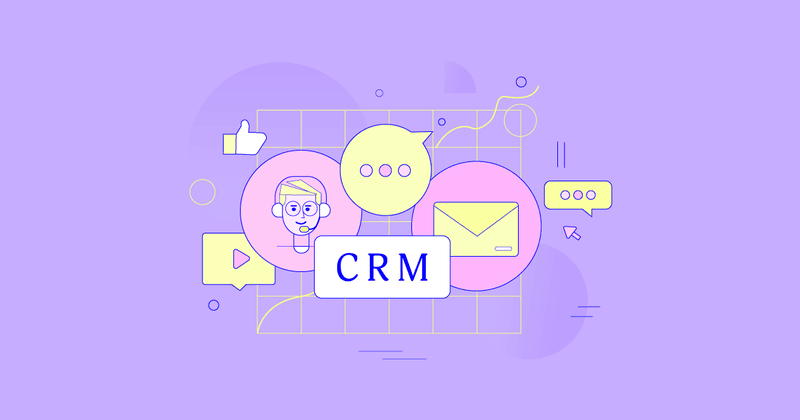How to optimize subscription apps with CRM
Learn how CRM can help you solve user problems, boost retention, and unlock additional revenue.

Pierre has been a Growth Consultant at Mobile Growth Consultancy, Phiture, for the past two years. He works on retention and monetization strategies for different app verticals and is always looking for the next breakthrough experiment to unlock new growth.
The primary goal of subscription-based apps is to maintain a positive ratio: converting more free users to paid plans than you lose through churn.
An app’s ability to create value for users over time is what drives subscriptions. A user will only subscribe to your app if the value they receive from the product is greater than the price they have to pay for a subscription. The product may drive subscriptions at different lifecycle stages for users. But it will also often be necessary to give a boost to your product that reminds users of the value of your premium plan in a contextualized and personalized manner.
This is where CRM comes in
One of the main ways to increase subscriptions is to optimize the free user experience. Customer relationship management (CRM) usually works to optimize the user’s lifecycle and ultimately, retention. The user lifecycle makes up all the steps a user goes through when they download the app, experience its value for the first time and then on a regular frequency, and finally, end up not using the product.
As an extension of the product, CRM can be used to fill gaps, support the user experience and drive even more conversions with A/B tests. Using CRM for subscription optimization is all about messaging users at different stages of their product journey, through channels like push notifications, emails, and in-app messages. For example, showing paywalls after the onboarding or after users activate and experience the app’s core value is a best practice for increasing early subscriptions. All types of A/B tests, like placements, design, and copy tests, can be achieved efficiently with in-app messages.
Enabling subscription optimization via CRM utilizes the user’s maturity at each of these stages, with a mix of channels and personalized messaging to recommend a subscription while respecting the product experience.
Leverage the user lifecycle and positive frictions

Traditionally, a CRM team’s North Star Metric is retention but subscription optimization plays a key part. At Phiture, we adopt a lifecycle approach to optimize subscriptions for our clients.
The core of the strategy lies in messaging users at different stages of their journey to move them to the next stage and keep them retained. In subscription optimization, your CRM strategy aims to identify opportunities at each stage of the lifecycle to increase the product’s ability to convert free users into paying users with personalized messages.
To put your strategy in motion, you will need a cross-channel platform that will allow you to easily engage with your users through a mix of channels: push notifications, in-app messages, emails, SMS, etc.
In-app messages generally show the best conversion rates for a subscription optimization program. From modal to full or multi-screen, in-app messages are a very versatile channel that will be the perfect vehicle for all copy, design, placement, and price testing. HTML modals allow you to capture the user’s attention instantly and deliver a custom message anywhere in your app. They are typically used to educate a new user on the app’s features, personalize the experience with all types of content, get additional information about the user and, of course, showcase your premium plan with paywalls and messages.
An in-app message paywall is a great solution to experiment and iterate quickly without having to hard-code paywalls or wait for product releases. You can trigger them after different user actions at different journey stages.
Show your paywall during onboarding and take advantage of onboarding
Onboarding is a crucial stage that will define your ability to retain and convert free users into paid users. The truth is that the majority of users are churning right after downloading. A large part of your optimization success starts here.
Among Phiture’s clients, 50%-80% of revenues and subscriptions come from onboarding within the first 1 hour of use.
In the early discovery of your premium plan, the placement of the paywall(s) plays a key role. The main rule is that you need to optimize the placement, so a maximum of new users are exposed to the paywall right after downloading the app. You need to monitor closely “install to paywall views”. Whether it’s before or after onboarding, or even on every app open, in-app messages triggered with Braze, a Customer Engagement Platform, can allow you to quickly test different placements, designs, or copy and find the balance between visibility, conversion, and friction in the user’s experience.
Other placements are also possible, especially after the user’s activation, i.e. after the user experiments with the application’s core value (the famous “Aha” moment). This is usually a great time to upsell free users. They realize how powerful your app is when it comes to solving their problem and are likely to seek even more value. It’s a great moment for an in-app message that can easily respect the storyline told during the onboarding. To be more effective, the in-app message has to be personalized according to the user’s use case where possible. Various copy can also be tested to get the most out of this moment and even tie in a special promotion that can be followed up with other channels like an email or notification later. The idea is to redirect and transform the gratification received from the activation into curiosity for your premium plan.
Segment your engaged users to target your best leads
In the engagement and retention phase, the challenge is to identify the users with the highest conversion potential and show them the limits of the free experience. Analytics tools like Amplitude can easily help you to perform retention, engagement, and cohort analysis to find some of your core users that are not yet subscribed.
Start targeting engaged users who have found value in your product. Some users have shown indirect intent (repetitive frequency of use, app’s core actions, high engagement) or direct intent (interacting with premium features) to subscribe.
There are therefore two approaches to upselling these free engaged users:
- Your product and CRM strategy can naturally lead users to subscribe when they enjoy their free experience. The mix of notifications, emails, or in-app messages they would have received during their journey has increased the value they got from the product and also their ability to solve the problem related to their use case. Each time users perform core app actions they get closer to converting. Setting users up for success and building strong habits is therefore optimizing subscriptions.
- As users reach the limits of the free experience, they may seek access to greater value by subscribing. You can retarget users who performed a free key action creating positive friction with an in-app nudge addressing the friction.
For a dating app, this could be typically swiping X number of times, getting closer to the limit, and not wanting to wait until the next day to continue swiping. The in-app can emphasize the positive friction without harming the product experience. It may lead users to subscribe to overcome this friction.
At that point, they will hit the various paywalls that can be implemented via CRM campaigns if the app infrastructure allows it. The recommendation is always to iterate with different designs and copy and find different triggers to develop a paywall experience that matches the diversity of your app touchpoints and positive frictions. From these premium feature gates or CTA interactions, funnel win-back strategies can be set up with push notifications and in-app messages for users who don’t end up subscribing.
CRM alone cannot overcome some limitations
The CRM optimizations you test to inform your monetization strategy can become limited quickly by:
Product infrastructure
The product itself and the way it has been developed can be a blocker. You sometimes don’t have access to the app events or touch-points you need. It, therefore, requires extra work and development time to implement them and put to work the strategy that you brainstormed.
If we keep going on the technical side, a CRM test will not be as reliable as a product test. You must ensure that your test is based on a solid foundation of the app’s background. A common example is that the event you rely on to send a paywall at the end of onboarding is not implemented correctly and doesn’t work as expected. It clashes with the end of the onboarding or with a native message that arrives right after, resulting in a potential loss in visibility and revenue.
In-app message paywalls
The more complex your native paywall and the experiments, the harder it is going to be to replicate and test in-app. Running copy, design, and UX tests at high speed can be challenging. A paywall built with CRM in-app messages will lose momentum and will have to be re-coded for some of the heavier tests.
To test in the blink of an eye, RevenueCat and Superwall can improve your paywall experiments without jeopardizing your user experience or having to release a new app. You can remotely configure and A/B test every aspect of your paywall in no time, without hard development work and almost no coding knowledge. This agility secures the unlocking of additional revenue.
Analytics
At the end of your experimentation cycle, keeping track of your revenue metrics allows you to identify opportunities to increase your subscription revenue. It’s important to have powerful subscription analytics to ensure that the optimizations made have a long-term impact on KPIs.
Relying only on a CRM platform’s analytics is not necessarily enough. Keeping track of the entire funnel and the whole user’s journey with up-to-date subscription KPIs is the long-term run. RevenueCat helps you to gain insight into who your users are and track the behavior of different cohorts across key subscription parameters.
CRM is a vital tool in unlocking new revenue
Monetization optimizations can influence your entire growth model by impacting the whole funnel from acquisition to retention. This is a company effort. From a CRM perspective, using in-app messages among other channels to upsell free users at different stages of their lifecycle can boost your revenue without facing product limitations. Onboarding and activation are the preferred playgrounds of optimizations, but considering segmentation and positive product frictions can make free, engaged users as critical to optimize as new users.
Properly used, there are tools that free up your sprints in all the parameters that can be tested and also in the learnings that you will collect and socialize. With this in mind, it’s best not to wait to optimize your subscription strategy. Start increasing your product’s ability to solve user problems, boost retention, and unlock additional revenue.
You might also like
- Blog post
Modeling attribution on iOS: what works, what doesn’t, and how to choose
How to navigate the messy world of SKAN, AEM, and probabilistic attribution — plus two practical frameworks to get a clearer picture of campaign performance.
- Blog post
Your sprints must pay for themselves: Dan Layfield’s product advice
What’s worth building? Dan Layfield shares a 3-bucket framework to help app teams prioritize features, fix churn, and ship faster.
- Blog post
Is monetization hurting your app’s user experience?
Don’t trade short-term revenue for long-term trust. How ethical UX can still drive effective monetization.

